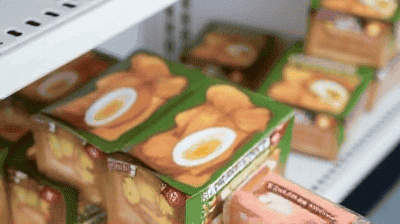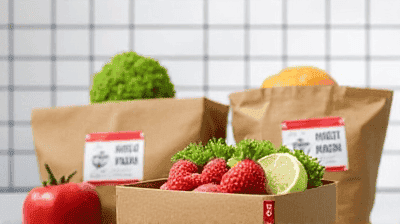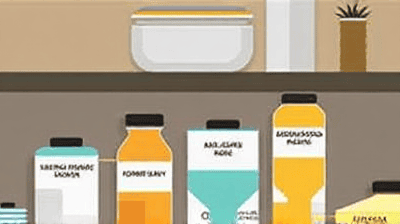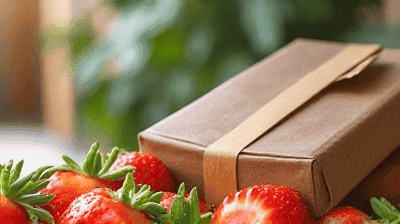
In our quest for a sustainable future, the challenge of food waste has emerged as one of the most pressing issues facing our food systems today. Approximately one-third of all food produced globally is wasted, with significant amounts of this spoilage occurring during transport and storage. As the world grapples with growing populations and increasing demand for food, innovations in food packaging have transformed from simply serving as a protective barrier to becoming essential tools in enhancing food freshness and extending shelf life. Smart packaging technologies are at the forefront of this transformation, offering solutions that not only reduce waste but also improve food safety and quality.
Smart packaging refers to packaging technologies that incorporate advances in materials, sensors, and information technology to monitor and manage the condition of food products. There are two main categories of smart packaging:
Active Packaging: This type of packaging interacts with the food itself to enhance shelf life or improve quality. It may release preservatives, absorb oxygen, or modify the atmosphere within the packaging.
Intelligent Packaging: This type includes sensors and indicators that provide real-time information about the product's condition, such as temperature, humidity, and spoilage. Intelligent packaging can alert consumers and suppliers about changes in the food's safety and quality.
Reducing Food Waste: By extending the shelf life of food products and providing information about freshness, smart packaging can significantly reduce food waste across the supply chain.
Enhancing Food Safety: Smart packaging technologies help ensure that food products are safe to consume, contributing to public health and reducing the risk of foodborne illnesses.
Efficiency in Distribution: With the ability to monitor the conditions of food during transport and storage, companies can optimize their supply chains, leading to more efficient distribution and less waste.
Consumer Awareness: Smart packaging provides valuable information to consumers, allowing them to make informed decisions about food safety and quality, ultimately promoting sustainable consumption practices.

Oxygen scavengers are materials incorporated into packaging that actively absorb oxygen from the environment. This process slows down the oxidation of food, a key factor in spoilage. By preventing oxidation, these technologies can greatly extend the shelf life of food items such as meat, dairy products, and baked goods.
Advantages: Oxygen scavengers help maintain the freshness and quality of food while reducing the need for preservatives.
Applications: Commonly used in vacuum-sealed meat packages and snacks, these materials can also be integrated into modified atmosphere packaging (MAP) for fruits and vegetables.
Ethylene gas, a natural hormone produced by fruits and vegetables during ripening, can accelerate spoilage. Ethylene absorbers are designed to remove or neutralize this gas from the packaging environment, slowing down the ripening process.
Advantages: By managing ethylene levels, these technologies can extend the shelf life of fresh produce, leading to reduced waste in grocery stores and consumers' kitchens.
Applications: Ethylene absorbers are often used in the packaging of avocados, bananas, tomatoes, and other climacteric fruits.
Excess moisture can lead to spoilage, mold growth, and changes in texture. Moisture control technologies, including desiccants and moisture-absorbing films, can help regulate humidity levels within packages.
Advantages: By maintaining optimal moisture levels, these technologies can enhance the shelf life of baked goods, dried fruits, and snack foods.
Applications: Commonly used in snack food packaging, moisture control technologies can be found in products like chips, cookies, and jerky.
Time-temperature indicators are intelligent packaging technologies that monitor the exposure of food products to temperature fluctuations over time. These indicators change color or display a signal based on the cumulative exposure to temperature, providing a visual representation of freshness and safety.
Advantages: TTIs help consumers and retailers make informed decisions about the safety of perishable items, allowing for better management of food inventory.
Applications: Used primarily in the packaging of seafood, dairy, and other temperature-sensitive products, TTIs provide real-time feedback on product quality.
Bio-based and edible films are innovative packaging solutions made from natural materials such as starch, protein, or cellulose. These films not only serve as barriers to moisture and oxygen but can also be consumed along with the food.
Advantages: These films reduce plastic waste generated by conventional packaging and provide additional nutritional benefits to consumers.
Applications: Commonly applied in applications such as fruit wraps, cheese packaging, and bakery products, bio-based and edible films represent a sustainable alternative to traditional plastic packaging.
Radio-frequency identification (RFID) and near-field communication (NFC) technologies allow for the seamless tracking and monitoring of food products throughout the supply chain. These systems can enhance efficiency by providing real-time data on location, temperature, and shelf life.
Advantages: By improving traceability and accountability, RFID and NFC technologies help reduce waste and ensure food safety.
Applications: Used in retail environments to monitor inventory levels and track food items, these technologies can also provide consumers with product information through their smartphones.
Smart packaging technologies play a critical role in minimizing food waste along the supply chain. By extending the shelf life of perishable items and providing real-time information on freshness, these technologies help ensure that food is consumed before it spoils.
By monitoring temperature, humidity, and other variables, smart packaging reduces the risk of contamination and spoilage. This enhances food safety, protecting consumers from the risk of foodborne illnesses.
Smart packaging technologies help maintain the quality and freshness of food products by controlling environmental factors such as oxygen, moisture, and temperature. This ensures that consumers receive high-quality products that meet their expectations.
Smart packaging provides important information about the condition and freshness of food products. This empowers consumers to make informed choices, fostering responsible consumption practices and reducing waste at the household level.
By reducing food waste and optimizing resource use, smart packaging contributes to more sustainable food production and distribution systems. This aligns with global efforts to achieve food security and environmental sustainability.

The cost associated with developing and implementing smart packaging technologies can be a barrier for some food producers, particularly small and medium-sized enterprises (SMEs). While the long-term benefits may outweigh the initial investment, the upfront costs can deter widespread adoption.
For smart packaging technologies to be successful, consumers must understand their benefits and feel confident in their effectiveness. Education and awareness campaigns are essential to promote acceptance and encourage responsible use of these innovations.
While many smart packaging solutions aim to reduce waste, it is important to consider the environmental impact of the materials used in their production. Ensuring that smart packaging is recyclable, biodegradable, or made from sustainable sources is crucial for minimizing their overall environmental footprint.
Regulatory requirements for food packaging can vary significantly between regions. Ensuring that smart packaging technologies comply with local regulations and safety standards is essential for successful market entry.
Some smart packaging technologies may have limitations in terms of their effectiveness under certain environmental conditions or with specific types of food products. Ongoing research and development are necessary to overcome these challenges and improve the reliability of smart packaging solutions.
Smart packaging technologies have been successfully implemented in the packaging of fresh fruits and vegetables to extend their shelf life and reduce waste. For example, ethylene absorbers or moisture control films can significantly prolong the freshness of tomatoes, avocados, and other perishables during transport and in retail environments.
Innovations such as TTIs and oxygen scavengers are used in the packaging of dairy products, ensuring that milk, cheese, and yogurt remain fresh and safe for consumption. These technologies not only enhance quality but also help retailers manage inventory more effectively.
Smart packaging has become increasingly important in the meat and seafood industries, where freshness and safety are paramount. Packaging equipped with oxygen scavengers and moisture control enables these products to maintain their quality during storage and transport, minimizing spoilage.
With the rise of convenience foods and meal delivery services, smart packaging technologies are being integrated into ready-to-eat meal packaging. Such innovations ensure that meals remain fresh and safe while providing value-added features like reheating instructions or nutritional information accessible via QR codes.

Sustainability Focus: As consumer demand for eco-friendly products continues to grow, the development of biodegradable and recyclable smart packaging solutions will be paramount in driving innovation.
Integration of AI and IoT: The integration of artificial intelligence (AI) and the Internet of Things (IoT) in smart packaging systems will enable real-time monitoring and analytics, optimizing inventory management and enhancing food safety.
Consumer Interaction: Future smart packaging may include features that enhance consumer engagement, such as interactive elements that provide recipes, tips for reducing waste, or loyalty rewards.
Personalization: As technology advances, smart packaging may allow for tailored solutions that cater to individual consumer preferences, enhancing the shopping experience and reducing food waste.
The continued development and adoption of smart packaging technologies have the potential to revolutionize the agricultural industry. By reducing food waste and enhancing food safety, these innovations support the transition to more sustainable agriculture practices. For farmers and producers, smart packaging offers a way to protect their products and improve marketability while minimizing environmental impact.
Smart packaging innovations represent a promising solution to the pressing issue of food waste in our modern food systems. By extending shelf life, enhancing food safety, and providing valuable information to consumers, these technologies contribute to a more sustainable approach to agriculture and food distribution.
As we embrace smart packaging solutions, it is essential to remain mindful of the challenges associated with implementation, material choices, and consumer acceptance. Continued investment in research, education, and policy support will be critical to unlocking the full potential of these innovations.
Through collaboration between producers, retailers, and consumers, we can harness the power of smart packaging to reduce food waste, improve food quality, and create a more sustainable future for our planet. By forging a path toward a more responsible and efficient food system, we can ensure that our agricultural practices align with the values of sustainability and environmental stewardship.